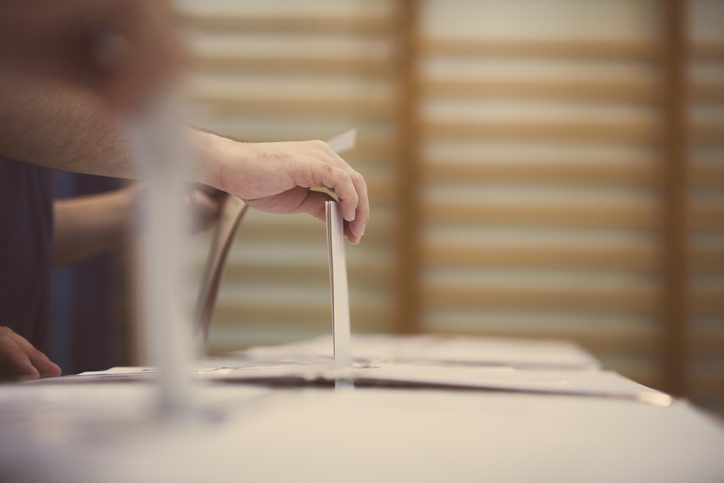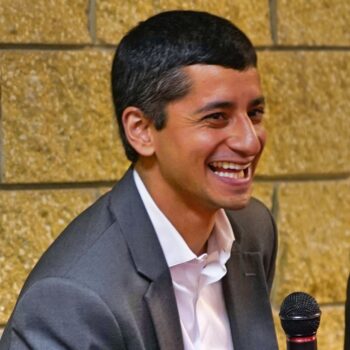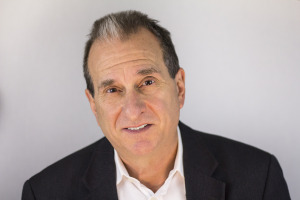The photos: Long lines, primarily of Black people, waiting patiently to vote in Milwaukee’s April elections. They’re well aware that by doing so, an unlucky number among them will get sick, and some few will likely die.
The reason: Decision-makers in Madison dismissed calls to postpone the election. Just five of Milwaukee’s 180 polling locations were open. Poll workers and PPE were in short supply.
The truth: Right-wing lawmakers in the state’s capital chose to make it hard to vote because they believed that lower turnout in Milwaukee would help them win a statewide race for Supreme Court. Mr. Jim Crow would have been proud.
Those scenes from Milwaukee stunned the nation but soon became familiar as other states struggled through June and July primaries. Election administrators rushed to recruit more poll workers with meager budgets and little assurance about safety. Voters flooded state and county websites to register for absentee ballots, hoping they’d be able to vote by mail in a timely, secure manner.
It was a real-time lesson in what the State Democracy Project was founded to do: bring more attention to the rules, not the rulers, to counteract the right’s successful long-term strategy to undermine democracy. The rules in American politics are not neutral. They never have been, and it’s hard to conceive of a time when they will be. We must change these rules to expand participation and make government officials more accountable to organizations and the public at large, or else they will continue to follow the right-wing model of restricting participation and leaving government officials to feather their own nests and enrich corporations.
In the midst of the pandemic, with Trump and GOP officials undermining the integrity of the election, we knew that the only acceptable option was to push elected officials and election administrators to expand access to the ballot box, rather than allowing voting access to contract because of ideology or inertia.
Some elected officials had already begun to respond. In Pennsylvania, the primary election was delayed and a well-meaning if hastily-prepared absentee program was quickly established (though some voters received their ballots after Election Day). Michigan’s superb Secretary of State stepped in and made sure that every voter in the state received an absentee ballot application. New Jersey’s governor issued an order to mail every voter a ballot without them having to ask for one. North Carolina’s state Board of Elections issued guidance for local election officials.
These actions were important but insufficient for three reasons.
First, we had to understand and address the impact of mail-in voting on younger Americans, low-income communities, and communities of color — all of whom, even in a pandemic, were more transient and more likely to have address changes.
Second, America may be a republic with fifty states (and disenfranchised territories), but elections are run by county officials in almost every state except in a few where they’re run by municipal officials. Our election system is much more decentralized than most people — even those in politics — know. Any effort to ensure that participation was safe, secure, and high has to take into account specific local officials, including those in counties far outside metropolitan centers.
Third, we knew that any attempt to establish good rules would be opposed by the right, which has worked to suppress voting for twenty-plus years. That’s why North Carolina is gerrymandered, why Wisconsin voters must produce identification to vote, and why Pennsylvania election workers can’t count early ballots until after the polls close.
Following the spring and summer primaries, SDP supported state-based organizers and well-placed governmental staffers who understood the need to improve election rules in a number of critically important states.
In Philadelphia, for example, SDP reached out to Mayor Jim Kenney’s team to work jointly on expanding access for safe in-person voting. We all knew that a robust supplement to the vote-by-mail program established by the state government was vital to facilitate high turnout. The work led to the establishment of 17 voting centers that were open for three weeks before Election Day and just as many drop box locations around the city. For one week, these early voting centers had a “golden window’” in which new voters or voters who had moved could initiate or update their registrations and cast their ballots during the same visit. With community allies and national partners, Philadelphia County recruited and trained more than 400 poll workers for Election Day, and the city redeployed scores of city workers to staff voting centers and count mailed ballots after polls closed to ensure that the results were accurate and timely.
In Wisconsin, the right had hoped to take advantage of the COVID situation to ensure a low-turnout election that would allow them to hold a vital state Supreme Court seat. As a result, their legislators rejected common-sense steps to expand absentee voting and keep their constituents safe. Thanks to the heroism of hundreds of thousands of voters who lined up amid the raging pandemic, their strategy backfired. Republicans lost the statewide Supreme Court race, and, at the local level, the election produced a new Milwaukee Alderwoman named Marina Dimitrijevic.
On her very first day in office one week later, Dimitrijevic (previously the State Director of the Wisconsin Working Families Party) introduced a “VoteSafe” ordinance that established remarkably strong procedures and processes for poll workers and voters alike. The City Council quickly passed the ordinance. Overnight, Milwaukee became the first big city east of the Mississippi to do what now seems like utter common sense: use the power and reach of city government to get as many people as possible to register and vote. The VoteSafe program included aggressive promotion of registration and mail-in voting; an expansion of early voting sites; the re-establishment of traditional polling stations; and, ultimately, the recruitment and training of poll workers who stepped into the breach created by the virus. The Milwaukee Education Association, SEIU, Center for Secure and Modern Elections, National Vote At Home Institute, local civic organizations, the City Clerk, and the Mayor’s Office each played pivotal roles in generating the momentum and recruiting the experts to bring this all together. The work in Milwaukee soon inspired copycat initiatives in other parts of the state. SDP organized webinars for city councillors from Fitchburg to Superior to Appleton. Eventually, state-level election officials decided that the state should simply send mail-in ballot applications to every voter, whether they asked for one or not.
In North Carolina, with SDP support, the North Carolina Black Alliance (NCBA), a network of Black local officials across the state, focused intently on small- and mid-sized counties outside the major metropolitan areas, with a particular emphasis on those that are economically distressed or have a population of at least 25 percent Black residents (or both). NCBA emphasized building trust with local election officials and community leaders to secure strong early voting plans, which were submitted to the State Board of Elections for approval. Through the combined work by NCBA and many other advocates, 52 counties offered Sunday early voting at 313 sites; in total, a record 451 early voting sites opened during the 17-day pre-election voting period. In the absence of federal or state funding, these expanded efforts were funded by philanthropic grants largely via a North Carolina community foundation. As a result, while the data are still being analyzed, every indication is that North Carolina saw historic highs on early voting, including among Black voters.
In other words, doing the unglamorous logistical work behind the scene yields real results. But these exceptional successes during the pandemic were barely enough to squeak by. Millions of voters were still confronted by absurdly long lines or had their ballots misplaced or delivered late by the Trump-addled USPS or saw their ballots unfairly rejected over technicalities. Looking ahead, every state continues to face significant obstacles to full participation elections. These obstacles are neither natural occurrences nor simply a function of outdated procedures. In state after state, barriers to participation are a feature, not a bug, of our voting systems. The right has designed them to limit access to the franchise by voters most likely to challenge the lies of trickle-down economics and color-blind social policy: low-income people, Black and brown people, and younger people chief among them. Big-money politics leads to elected officials who care more about the opinions of the wealthy rather than the rest of us. Districts drawn by those in power preserve that power at the expense of communities being equitably represented.
The skillful defense this year was vital but will be insufficient in coming years as attacks on our democratic rights continue. In order to preserve and expand these rights, we have no choice but to organize for durable, proactive solutions through state legislatures, ballot initiatives, and executive orders.
We know what to do. So, let’s do it.
Click here to read the entire Elections 2020: Strategy Debrief issue.


